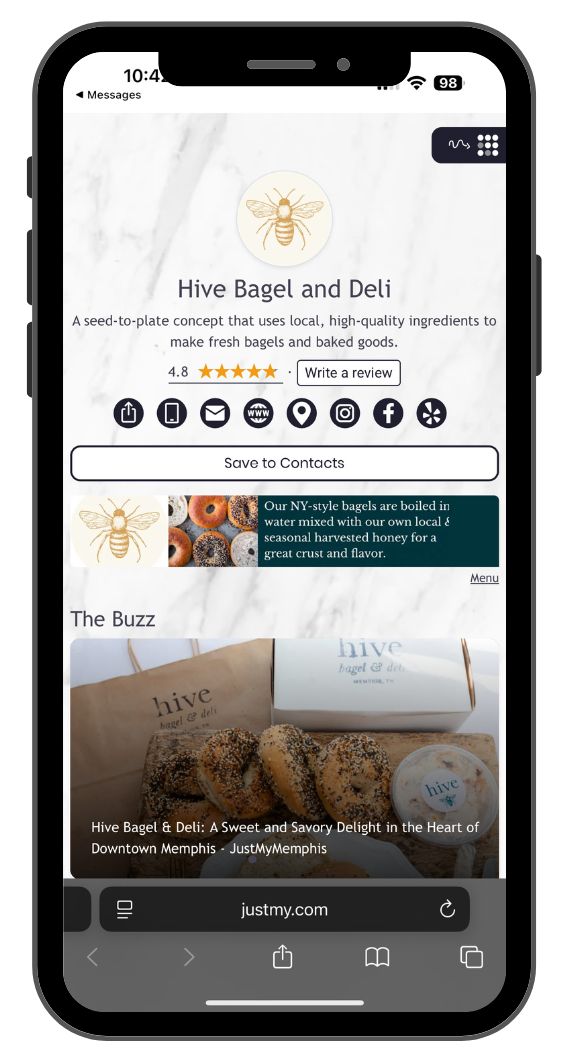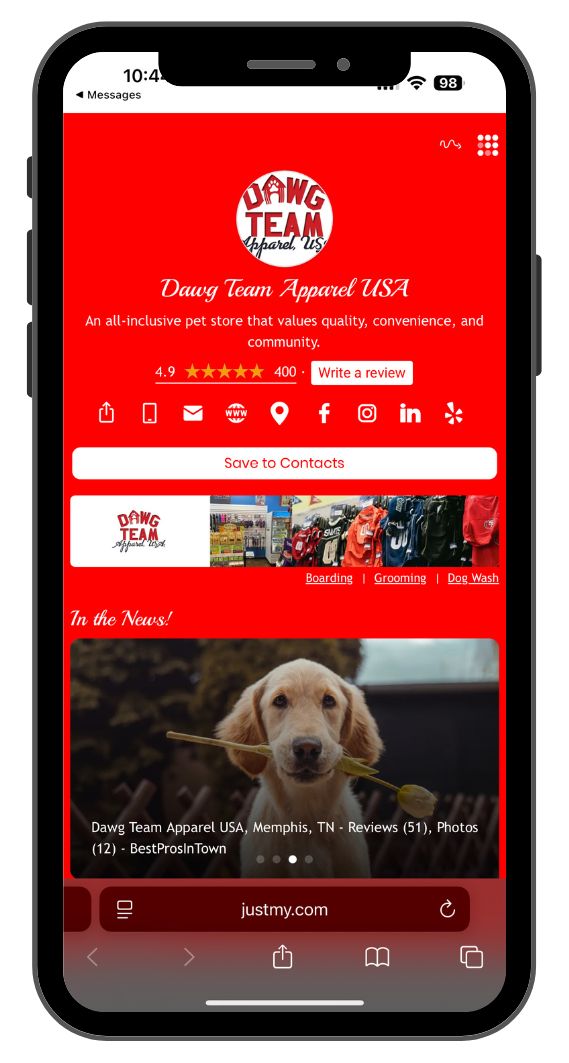

Dear Future Leaders of Memphis,
As we approach the upcoming mayoral and city council elections, it's essential to consider the potential for transformative change in our city. Memphis is currently facing significant challenges, including economic struggles, crime, poor education, and blight. However, there is hope for a brighter future, and one potential solution lies in the Metropolitan Area Projects (MAPS) program from Oklahoma City.
The MAPS program has successfully revitalized Oklahoma City since its inception in 1993, addressing various urban development needs through targeted investments in transportation, education, recreation, entertainment, arts and culture, public space, and lifestyle amenities. By adopting a similar program, Memphis can create a more vibrant and thriving community, improving the city's self-image and addressing its core issues.
Imagine a Memphis with improved transportation infrastructure, connecting neighborhoods and key destinations, making it easier for residents to access jobs, education, and essential services. Envision a city where our public schools are modern and safe, providing quality education and opportunities for all children, regardless of their background. Picture a Memphis with thriving arts and cultural institutions, vibrant public spaces, and recreational facilities that promote a healthy and active lifestyle for all residents.
By implementing a MAPS-like program, our next mayor and city council can make a real change in our city. This program can be funded through a temporary penny sales tax, similar to the one used in Oklahoma City, allowing us to invest in transformative projects without incurring debt.
Take a few minutes to see what MAPS has done for Oklahoma City and what it can do for Memphis!
Sincerely,
JR Robinson | JustMyMemphis CEO
Origins and Purpose
The Metropolitan Area Projects (MAPS) program was first conceived in 1993 as a multi-year municipal capital improvement initiative in Oklahoma City. The program aimed to revitalize the city, which was struggling economically at the time, by investing in transportation, education, recreation, entertainment, arts and culture, public space, and lifestyle amenities. The success of the original MAPS program led to subsequent initiatives, such as MAPS for Kids, which focused on improving public schools.
Funding through a Temporary Penny Sales Tax
The MAPS program is funded by a temporary penny sales tax, which has raised billions of dollars for various public projects. This funding approach allows the program to remain debt-free and financially sustainable. The temporary sales tax is applied to every dollar spent in Oklahoma City, and the funds are dedicated specifically to the projects identified in the enabling ordinance. Each iteration of the MAPS program is overseen by a volunteer citizens oversight committee, which makes recommendations to the City Council.
Key Projects and Their Impact on Oklahoma City
The first iteration of the MAPS program focused on several key projects that played a significant role in revitalizing Oklahoma City:
1. Bricktown Canal: This project transformed a rundown warehouse district into a vibrant entertainment area with restaurants, shops, and entertainment venues. The canal itself offers water taxi rides and serves as a focal point for the district, attracting tourists and locals alike.
2. Downtown OKC Metropolitan Library: The construction of the downtown library provided a modern, state-of-the-art facility for the community, offering a wide range of resources, meeting spaces, and technology services. This project contributed to the city's cultural and educational development.
3. Transformation of the Oklahoma River: Once an area that had to be mowed, the Oklahoma River was transformed into a world-class rowing and canoe/kayak venue, attracting national and international events. The river also became an Olympic and Paralympic training site, further enhancing the city's reputation as a sports destination.
4. Civic Center Music Hall renovation: The renovation of the Civic Center Music Hall revitalized a historic venue, providing a modern and comfortable space for performing arts events. This project contributed to the city's cultural scene and helped attract top-tier performances to Oklahoma City.
These projects, among others, played a crucial role in improving the city's economy, quality of life, and national image.
Lessons Learned and Success Factors
The success of the first MAPS program can be attributed to several factors:
1. Combination of projects: The strategic mix of projects allowed for synergies between them, addressing community needs in a comprehensive manner.
2. Debt-free construction: The temporary penny sales tax funding approach enabled the city to complete projects without incurring debt, providing more flexibility and financial sustainability.
3. Citizen engagement: The involvement of citizens in the planning and oversight of the program ensured that projects were aligned with the community's needs and priorities.
4. Long-term vision: The program focused on transformative projects that would have a lasting impact on the city, rather than short-term fixes.
By learning from the successes and challenges of the first MAPS program, Oklahoma City was able to refine and expand the initiative in subsequent iterations, further enhancing the city's development and quality of life.
Focus on Improving Public Schools
MAPS for Kids, the second iteration of the MAPS program, shifted its focus to enhancing the quality of education in Oklahoma City. Launched in 2001, the initiative aimed to improve public schools by investing in new facilities, renovations, and technology upgrades. The program was funded by a combination of a temporary penny sales tax and a $180 million bond issue, which together raised over $700 million for Oklahoma City public schools.
Major Accomplishments and Outcomes
MAPS for Kids had a significant impact on the city's public schools, with numerous accomplishments and outcomes:
1. New and renovated schools: The program led to the construction of 70 new and renovated school buildings, providing modern and safe learning environments for students.
2. Technology upgrades: MAPS for Kids funded technology improvements in schools, including the installation of new computers, smartboards, and other educational tools.
3. Transportation improvements: The program provided funds for new buses and transportation infrastructure, ensuring that students could travel to and from school safely and efficiently.
4. Community involvement: MAPS for Kids encouraged community engagement by involving parents, teachers, and other stakeholders in the planning and implementation of the projects.
These accomplishments contributed to a better educational experience for students in Oklahoma City, helping to improve academic performance and overall quality of life. The success of MAPS for Kids demonstrated the potential of targeted investments in education to make a lasting impact on a city's future.
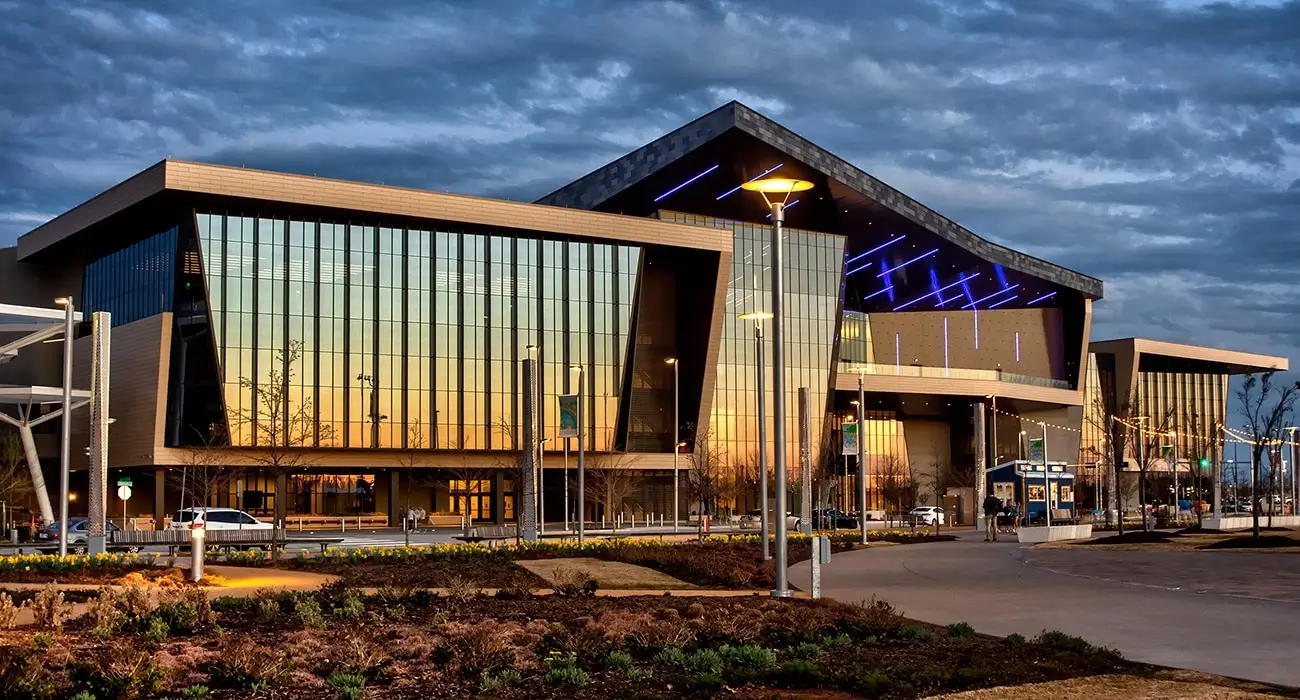
MAPS 3, the third iteration of the MAPS program, expanded its scope beyond the initial focus on downtown revitalization and public schools. Launched in 2010, the program was funded by a temporary penny sales tax that raised $777 million for various public works and redevelopment projects in Oklahoma City. The construction phase of MAPS 3 was well underway, with the final project expected to be finished in 2022.
Notable Projects and Their Contributions to the City's Development
MAPS 3 included several key projects that further contributed to Oklahoma City's development:
1. Streetcar System: The MAPS 3 streetcar system connected key areas of downtown Oklahoma City, including the St. Anthony Hospital Complex, the Downtown Bus Transit Center, Oklahoma City Amtrak station, the future MAPS 3 Convention Center, and Chesapeake Energy Arena. The streetcar system also served the downtown districts of Automobile Alley, Bricktown, and Midtown, enhancing connectivity and accessibility for residents and visitors.
2. Downtown Convention Center: The MAPS 3 Convention Center aimed to attract large-scale events and conferences to Oklahoma City, boosting the city's economy and national image.
3. Downtown Public Park: The MAPS 3 Downtown Public Park provided a new green space for residents and visitors to enjoy, promoting outdoor activities and community engagement.
4. Wellness Centers: MAPS 3 funded the construction of several senior wellness centers, offering health and fitness programs tailored to the needs of older residents.
These projects, along with others, continued to build on the successes of the previous MAPS initiatives, further enhancing Oklahoma City's economy, quality of life, and reputation as a thriving urban center.
Current and Planned Projects
MAPS 4, the latest iteration of the MAPS program, includes 16 projects with a focus on various aspects of urban development, such as transit and transportation, parks and recreational facilities, affordable housing, and innovation and job creation. Some of the key projects in these areas are:
1. Transit and Transportation: MAPS 4 allocates $97 million for transit improvements, including the construction of two additional Bus Rapid Transit (BRT) lines in South and Northeast Oklahoma City, upgrades to existing bus stops, and advanced transit systems.
2. Parks and Recreational Facilities: The program dedicates $154 million to transform the city's parks system. This includes $70.2 million for upgrading 105 neighborhood and community parks across Oklahoma City, as well as funding for soccer facilities, Oklahoma River enhancements, and community gardens.
3. Affordable Housing: MAPS 4 invests $55.7 million in affordable housing options, aiming to maintain and expand housing for vulnerable and low-income populations. This investment is expected to leverage more than $400 million in additional funding from other sources.
4. Innovation and Job Creation: The program allocates $76.7 million for investments in the Innovation District in near northeast Oklahoma City. This funding will create jobs and encourage economic diversification, with projects such as the Henrietta B. Foster Center for Northeast Small Business Development and Entrepreneurship, and better connectivity in and around the Innovation District.
The MAPS 4 program aims to build on the successes of previous iterations by addressing a diverse range of urban development needs. The anticipated benefits and long-term vision of the program include:
1. Enhanced Connectivity: Improved transit and transportation infrastructure will make it easier for residents and visitors to access key areas of the city, promoting economic growth and quality of life.
2. Revitalized Parks and Recreational Spaces: Upgraded parks and recreational facilities will provide residents with more opportunities for outdoor activities and community engagement, contributing to a healthier and more vibrant city.
3. Increased Access to Affordable Housing: Investments in affordable housing will help address the needs of vulnerable and low-income populations, promoting social equity and reducing homelessness.
4. Economic Growth and Diversification: By investing in innovation and job creation, MAPS 4 aims to stimulate economic growth and diversify the city's economy, making it more resilient and attractive to businesses and investors.
Overall, MAPS 4 seeks to continue the transformation of Oklahoma City by addressing a wide range of urban development challenges and opportunities, ultimately improving the quality of life for its residents and enhancing the city's reputation as a thriving urban center.
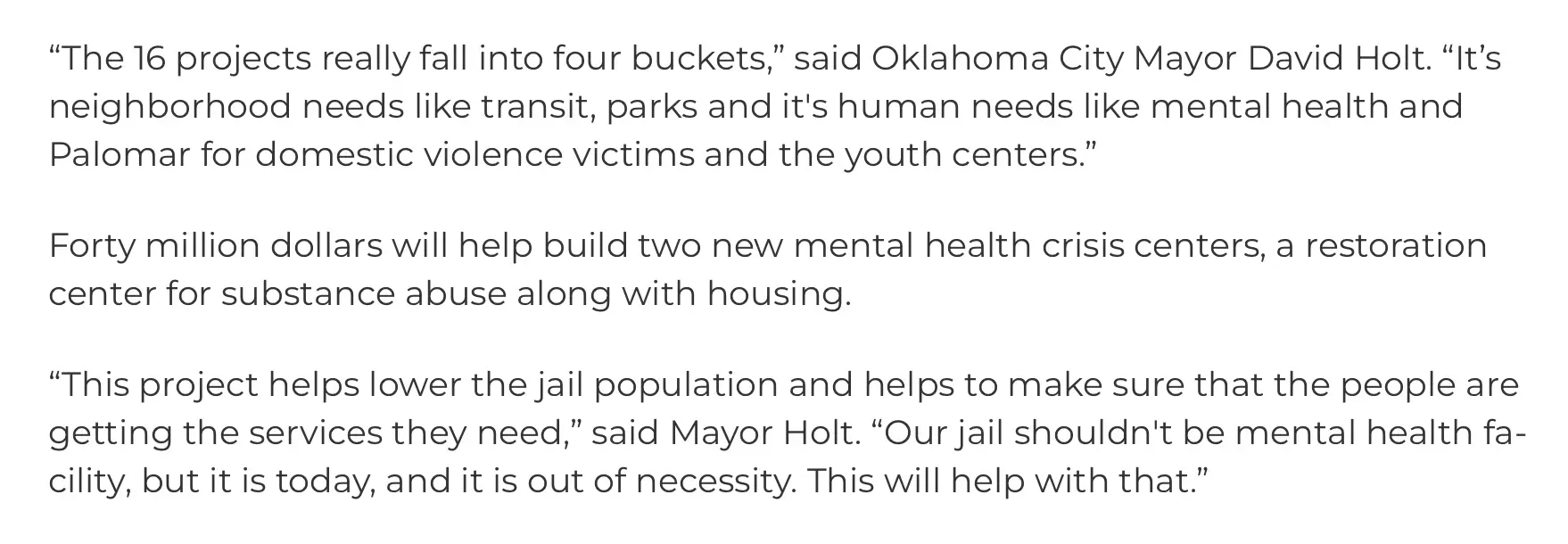
Overall Impact on Oklahoma City's Economy, Quality of Life, and Reputation
The Metropolitan Area Projects (MAPS) program has had a profound impact on Oklahoma City since its inception in 1993. Through its various iterations, the program has transformed the city's economy, quality of life, and national reputation:
1. Economic Revitalization: The MAPS program has attracted new businesses and investments to Oklahoma City, contributing to its economic growth. The program's investments in public projects have totaled more than $7 billion, with a significant multiplier effect on the local economy.
2. Improved Quality of Life: By investing in transportation, education, recreation, entertainment, arts and culture, public space, and lifestyle amenities, the MAPS program has enhanced the quality of life for Oklahoma City residents. The program has created new and improved public spaces, provided better educational facilities, and promoted a healthier and more vibrant community.
3. Enhanced National Reputation: The success of the MAPS program has put Oklahoma City on the map as a thriving urban center. The city has attracted national and international events, such as rowing and canoe/kayak competitions, and has become an Olympic and Paralympic training site. The program has also helped to attract top-tier performances and conferences to the city, further enhancing its reputation.
The success of the MAPS program can be attributed to several factors and best practices that other cities, like Memphis, could learn from:
1. Strategic Project Selection: The MAPS program has focused on transformative projects that address a wide range of community needs, creating synergies between different initiatives and maximizing their impact.
2. Debt-Free Funding: The temporary penny sales tax approach has allowed the program to remain debt-free and financially sustainable, ensuring that projects can be completed without burdening future generations.
3. Citizen Engagement: The involvement of citizens in the planning and oversight of the program has ensured that projects are aligned with the community's needs and priorities, fostering a sense of ownership and pride in the city's development.
4. Long-Term Vision: The MAPS program has focused on projects with lasting impact, rather than short-term fixes, demonstrating a commitment to the city's long-term development and success.
By understanding and applying these success factors and best practices, other cities can harness the transformative power of the MAPS program to address their own urban development challenges and create thriving, vibrant communities.
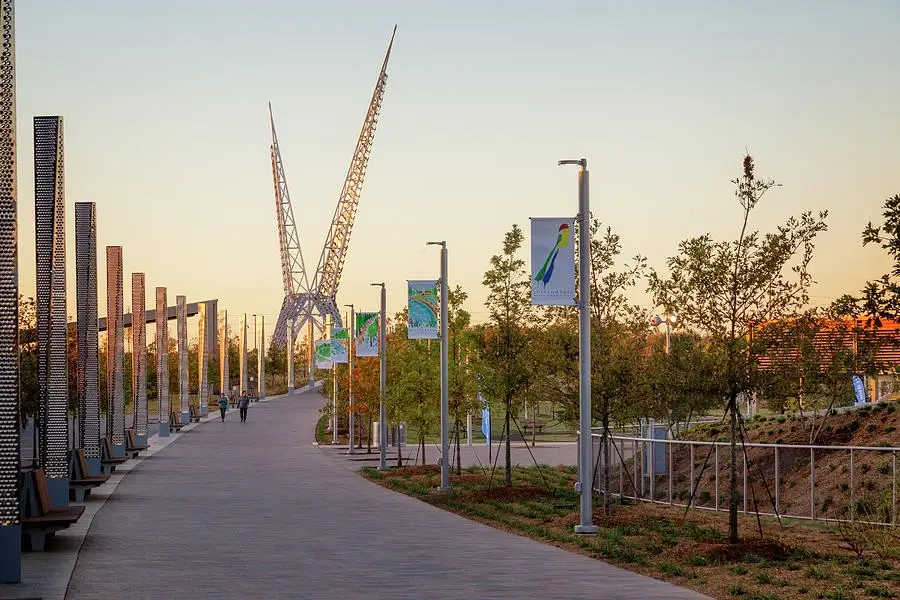
"The MAPS Program is a creative approach to fund critical needs in the community. The public is given an opportunity to vote on the funding, which gives them a voice on the most important priorities. This is a model that Memphis will explore under my Administration."
Paul Young
"This overview is a prime example of what a true ecosystem comprehensive plan looks like. It will take the right leader who is disciplined, courageous, and has proven results. Memphis needs to THRIVE the community deserves better. "
Karen Camper
Memphis can learn from the MAPS program and focus on specific areas to address its challenges and improve the city's self-image. By investing in transportation, education, recreation, entertainment, arts and culture, public space, and lifestyle amenities, Memphis can create a more vibrant and thriving community.
Transportation
Improving transportation infrastructure can enhance connectivity and accessibility for residents, promoting economic growth and quality of life. Memphis could consider projects such as:
1. Expanding and improving public transit, including bus and light rail systems, to better serve the city's neighborhoods and key destinations.
2. Developing bicycle and pedestrian infrastructure to encourage active transportation and improve safety.
3. Investing in road and bridge improvements to reduce congestion and enhance mobility.
Education
Investing in education can help address poverty and improve the city's reputation. Memphis could focus on:
1. Renovating and expanding public schools to provide modern and safe learning environments.
2. Supporting innovative educational programs and partnerships, such as the University of Memphis' Educational Initiatives Department, which oversees various university schools and the Center for Service, Learning & Volunteerism.
3. Providing resources and support for after-school programs, mentorship initiatives, and other youth-focused activities.
Recreation, Entertainment, Arts and Culture
Investing in recreational, entertainment, arts, and cultural amenities can improve the city's self-image and attract visitors. Potential projects for Memphis include:
1. Developing new parks and recreational facilities, such as the Memphis Sports and Events Center at Liberty Park, which features a large indoor sports facility.
2. Supporting arts and cultural institutions, such as museums, theaters, and galleries, to enhance the city's cultural scene.
3. Organizing and promoting community events, festivals, and performances to foster civic pride and engagement.
Public Space and Lifestyle Amenities
Improving public spaces and lifestyle amenities can contribute to a more vibrant and attractive city. Memphis could consider:
1. Revitalizing underdeveloped areas and addressing blight through the renovation or demolition of abandoned properties and the creation of green spaces and parks.
2. Investing in public amenities, such as libraries, community centers, and senior wellness centers, to serve the needs of residents.
3. Supporting local businesses and entrepreneurs through initiatives like the Henrietta B. Foster Center for Northeast Small Business Development and Entrepreneurship.
By focusing on these key areas and adopting a MAPS-like program, Memphis can address its challenges, improve its self-image, and create a more vibrant and thriving community.

Put your business in front of thousands of LOCALS! Create your free listing on the NewsSTAND and update your profile anytime to share the latest info, specials, and contact details.

Got a story to Share? Pitch your idea or write an article for the NewsSTAND! Join us in highlighting the positive and powerful moments that make our city shine.
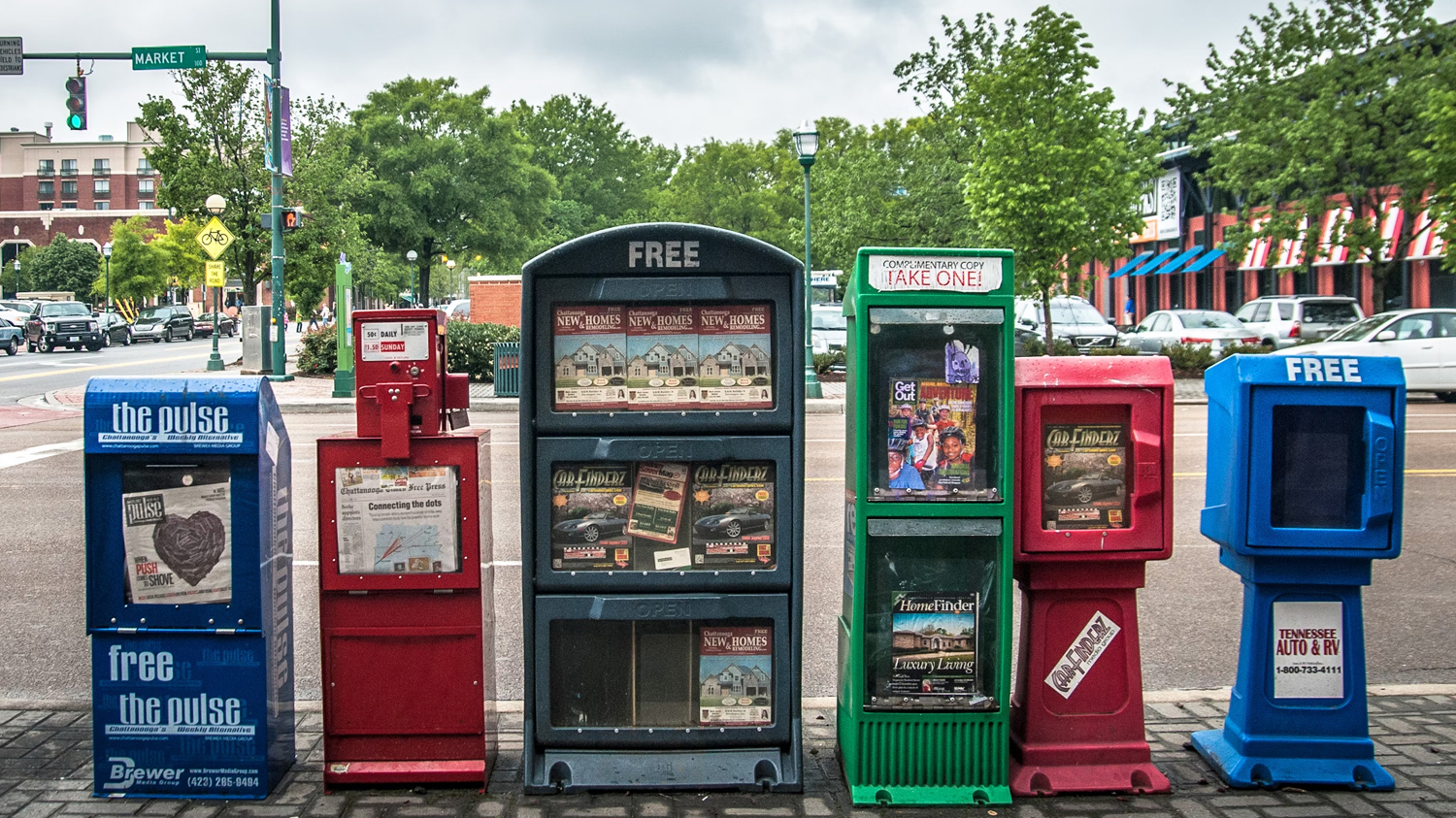
We’re passionate about working together to amplify our City. Reach out to the NewsSTAND team to explore collaboration opportunities and make a difference in our community.
Hover over each card to unlock the full story and see what you’re about to get!


